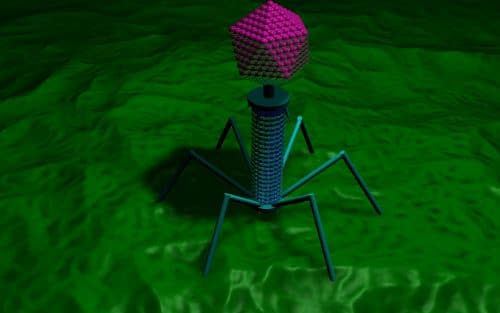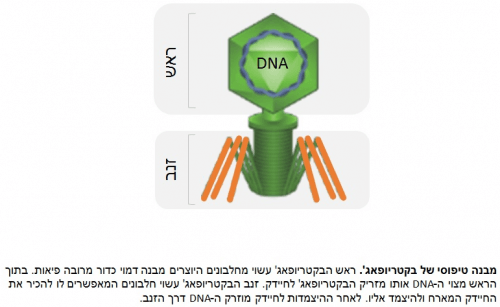The researchers developed an effective method for introducing DNA into bacteria, including antibiotic-resistant and violent bacteria. The new development will streamline the fight against disease-causing bacteria and may even reshape bacterial populations found in nature and the human body.

Researchers at Tel Aviv University have developed a groundbreaking technology to expand the range of action of bacteriophages - viruses that serve as a main tool for introducing new DNA into disease-causing bacteria, with the aim of neutralizing their violent activity. The new development allows scientists to adapt one type of bacteriophage to a wide variety of bacteria. In this way, it may significantly optimize and speed up development processes of potential drugs based on DNA injection into bacteria.
The research was led by the researchers: Dr. Ido Yosef, Dr. Moran Goren, Raa Globus, Shahar Molchansky, and Prof. Udi Kimron from Tel Aviv University. The research was published in the prestigious scientific journal Molecular cells in June 2017 and was even featured on its cover page.
"In recent years, science is mobilizing the capabilities of genetic engineering to fight disease-causing bacteria, including bacteria that have developed resistance to antibiotics, and have become violent and dangerous again," explains the leader of the study, Prof. Udi Kimron from Tel Aviv University's School of Medicine.
"One of the main methods we are developing is changing the properties of the bacteria by changing their DNA. In this way, we can give the bacteria properties chosen by us, and neutralize properties that are harmful to humans - such as creating toxins, causing disease, and resistance to antibiotics."
In order to insert new DNA into the bacteria, researchers often use the natural enemies of the bacteria - viruses called bacteriophages, which have billions of years of evolutionary 'experience' in penetrating bacteria. But according to Prof. Kimron, "to date, the procedure has encountered a significant obstacle: each bacteriophage uniquely attacks a very limited number of types of bacteria. In other words: in order to inject DNA into a certain bacterium, researchers must use the particular bacteriophage adapted to it, which makes research difficult, and greatly reduces the possibilities. We have developed a way to significantly expand the range of host bacteria, into which the bacteriophage can inject the desired DNA."

evolutionary selection
In the first step, the researchers engineered bacteriophages that suited their purposes. "Each bacteriophage consists of a head and a tail," explains Prof. Kimron. "The head contains genetic material, and the tail attaches itself to the target bacterium, and injects the genetic material into it. By means of genetic engineering we managed to change the bacteriophages from head to tail. We inserted the DNA we want into the head - for example DNA that will increase the bacterium's sensitivity to antibiotics; And we attached the right tail to each head, which connects to the right bacteria." As proof of the potential inherent in the innovative procedure, these hybrids, the researchers created a bacteriophage capable of injecting the selected DNA into ten different species of bacteria.
In the second part of the study, the researchers sought to enhance the ability of bacteriophages to transfer DNA to the selected bacteria. "We used a method of accelerated evolution under laboratory conditions," says Prof. Kimron. "We focused on bacteriophages that do transfer DNA to bacteria, but with very low efficiency. In a test tube, we met the bacterium with billions of bacteriophages with different tails, and only those whose tails matched the bacterium were able to insert the DNA. This is how evolutionary selection was created in favor of these tails. After a large number of selection cycles, we were able to produce bacteriophages with tails that inject DNA into the same bacteria with high efficiency."
Prof. Kimron concludes: "Changing the DNA of disease-causing bacteria with the help of bacteriophages is a promising technology in the ongoing struggle to eradicate many diseases. Among other things, the technology may help restore sensitivity to antibiotics in bacteria that have developed resistance to common drugs. We believe that our development will make a significant contribution to the progress of research in this direction, and may in the future serve as a basis for innovative drugs."
The research is funded by the Momentum Fund of Ramot, the commercialization company of Tel Aviv University, which was established for the purpose of funding groundbreaking research. The project was located about two years ago in an initial phase and has received funding in the amount of about 700 thousand dollars so far. This funding, which is rare in its scope in the academic climate, allowed the development of the research to these advanced stages.
